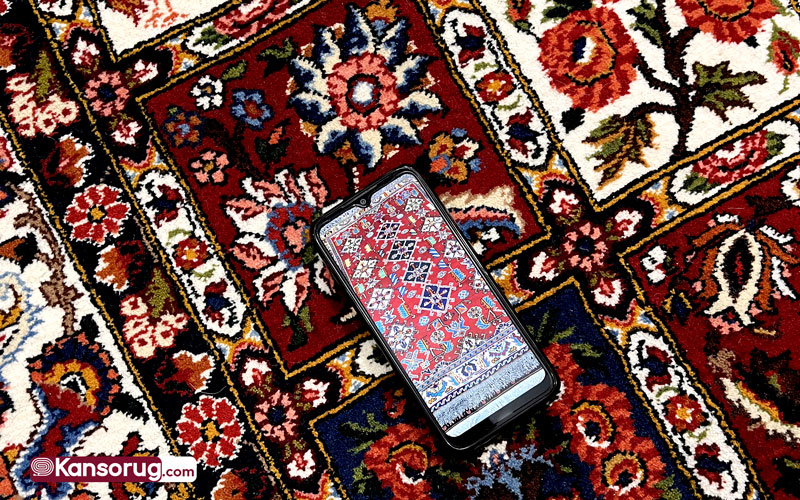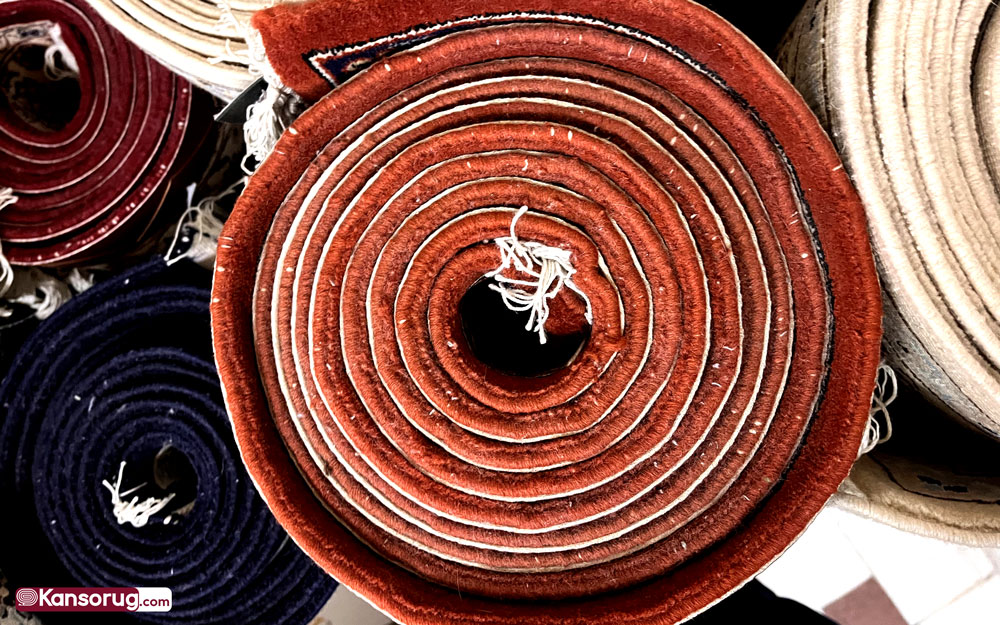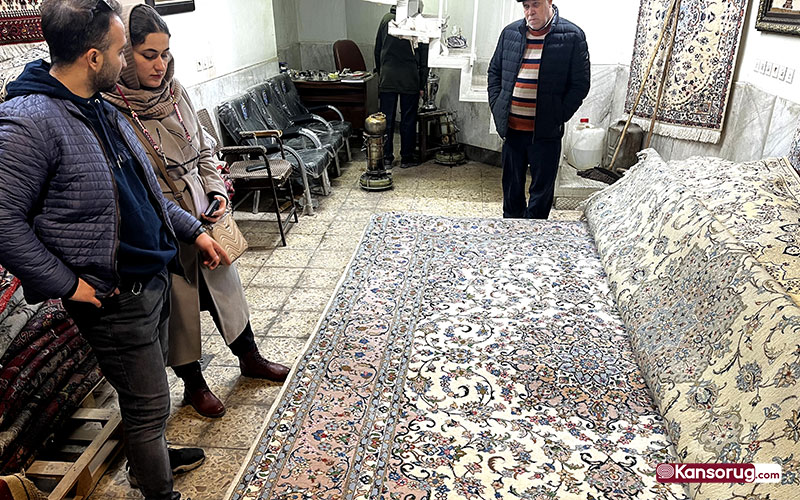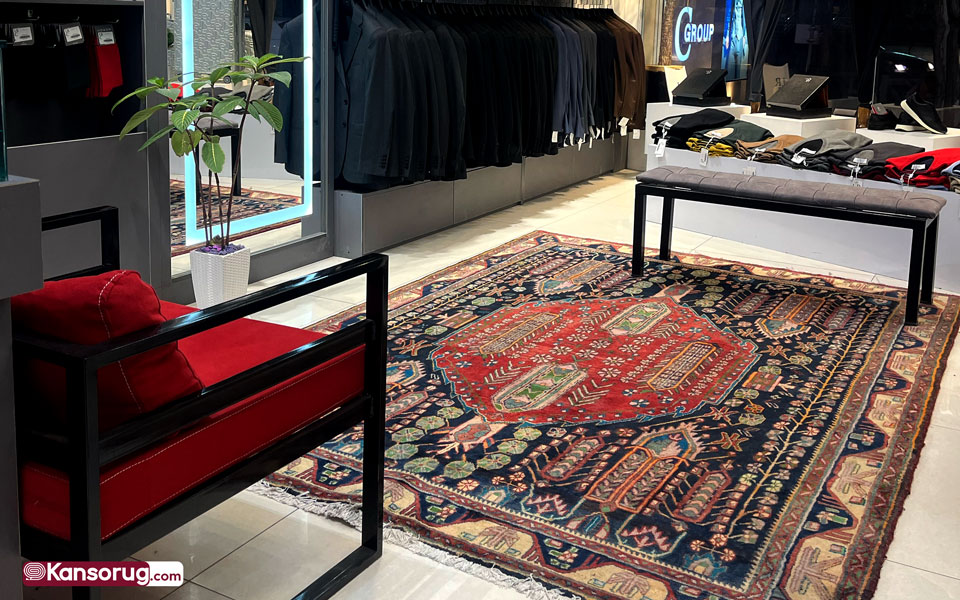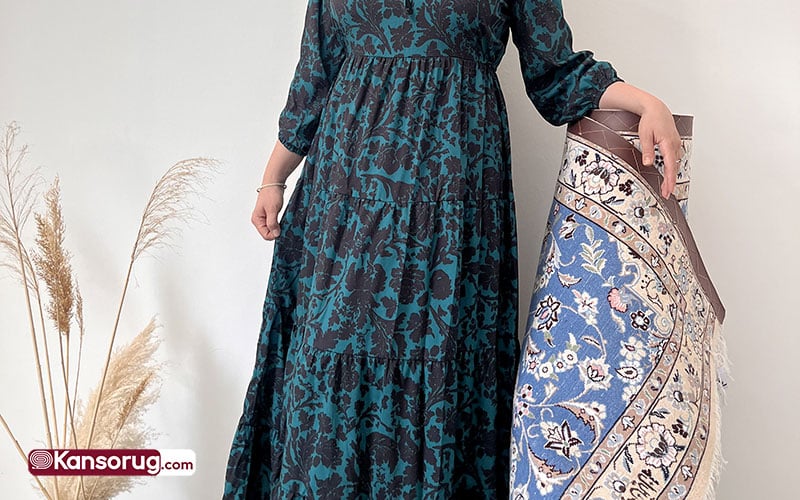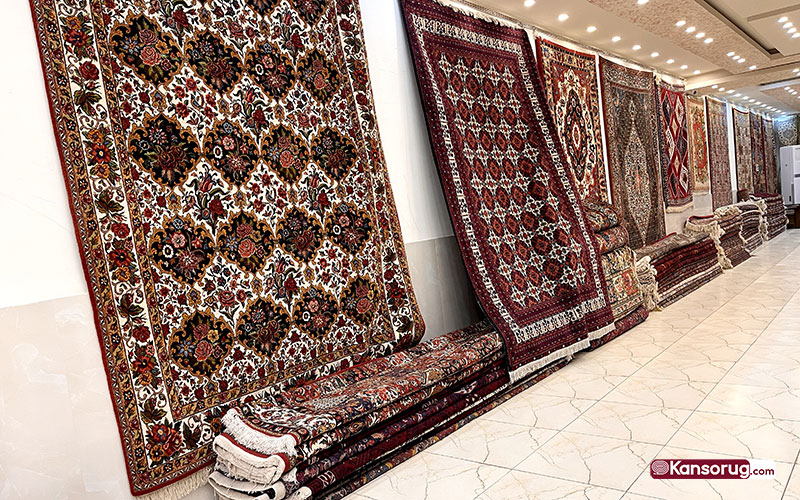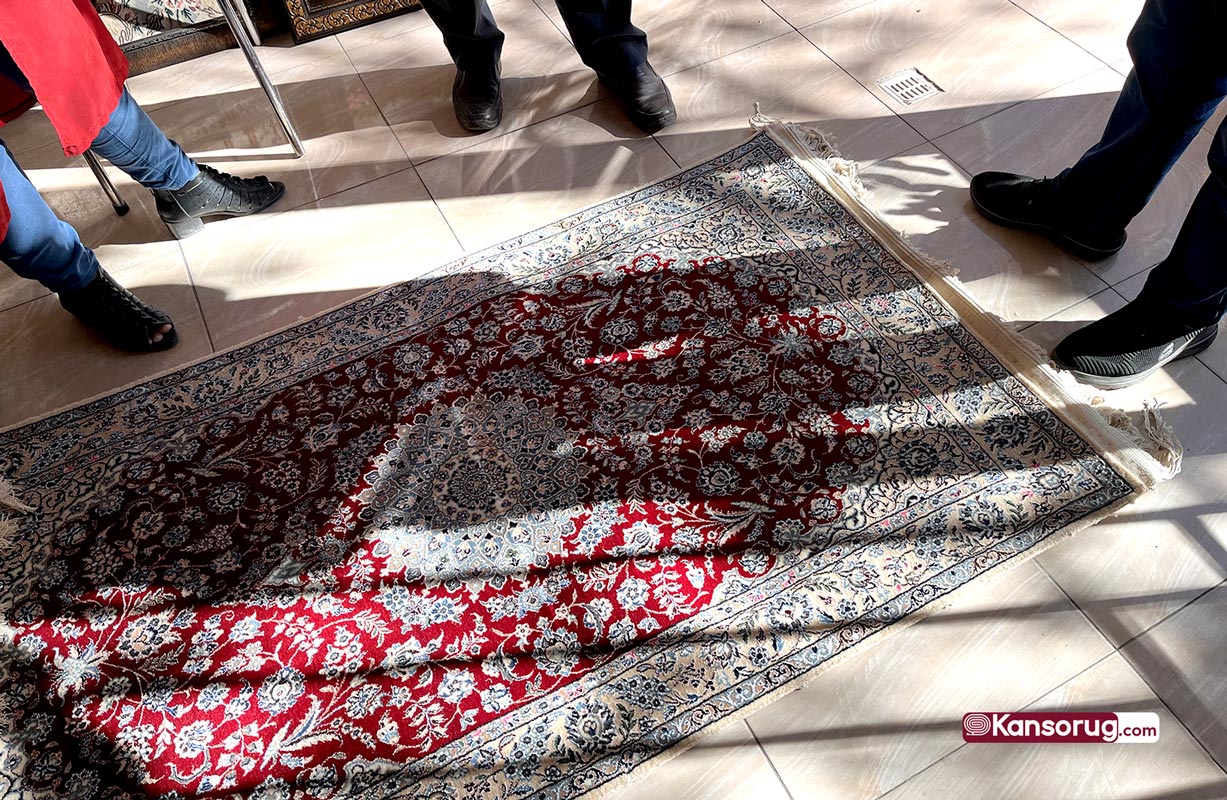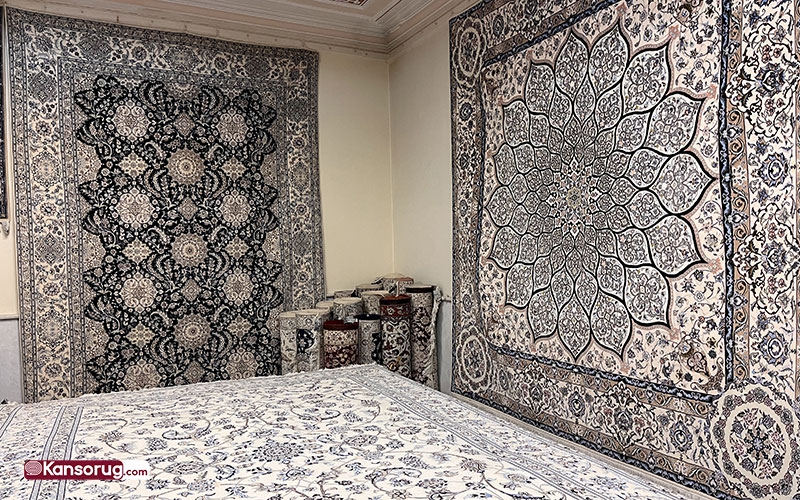Spot a Real Deal: Identifying Persian Handwoven Carpets
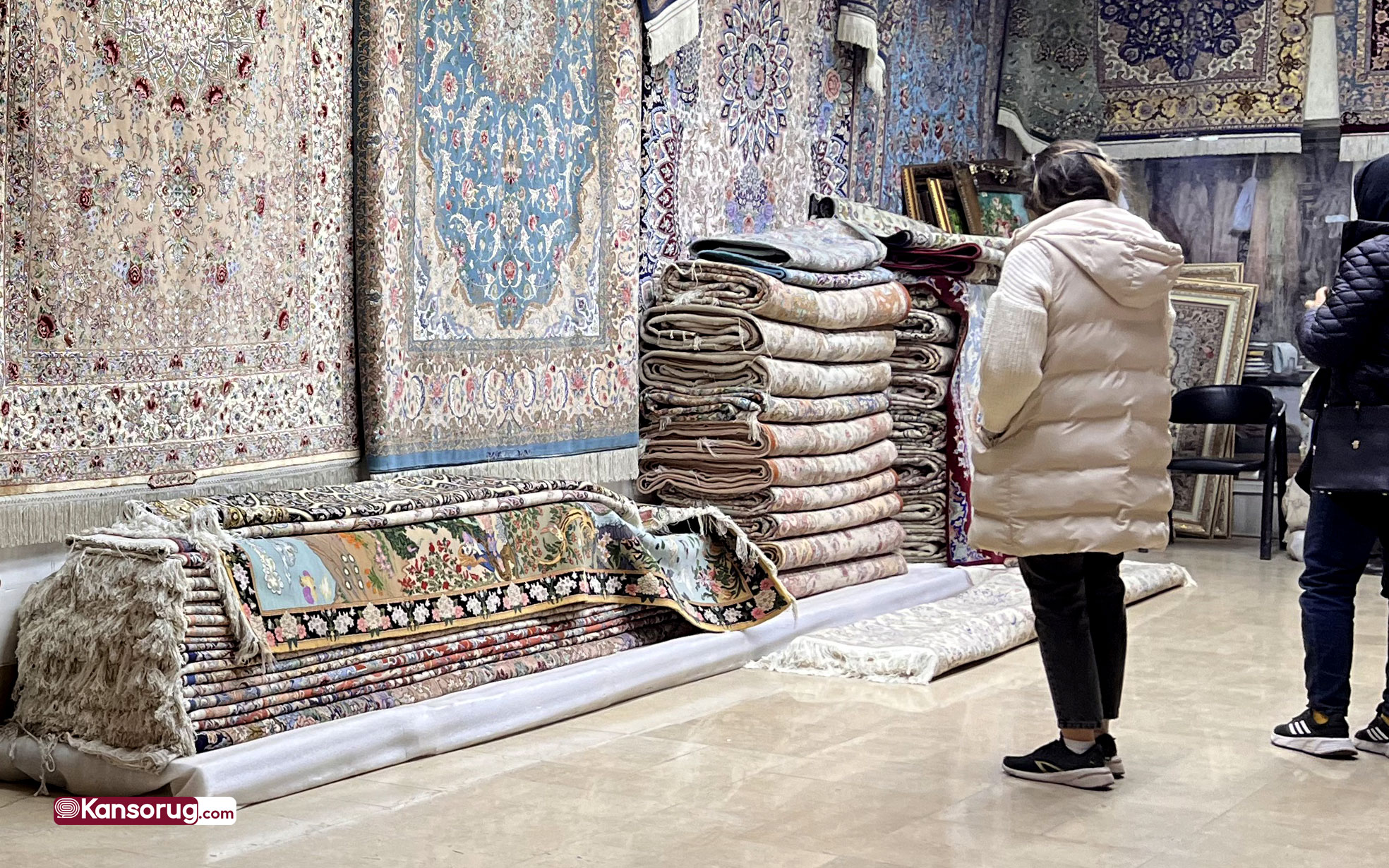
Recognizing a handmade carpet is a valuable skill for any carpet buyer. Unlike machine-made rugs, only handmade carpets increase in value with age. The intricate knotwork created by human hands adds a unique charm and beauty. But in this article, we'll take a different approach, helping you identify genuine handwoven Persian carpets anywhere in the world. Follow us to answer Spot a Real Deal: Identifying Persian Handwoven Carpets.
We'll explore three key areas: first, the difference between hand-woven and machine-made carpets. Second, we'll differentiate genuine handwoven Persian carpets from similar or fake options. Finally, we'll delve into specific methods for identifying a handwoven Persian carpet. So stay tuned to learn how to identify handmade rugs and make informed buying decisions.
Unsure if your heirloom rug is a real Persian treasure or a clever fake? Explore our Persian rug patterns guide and learn how to use an Oriental rug identifier app to differentiate between real Persian rugs and fakes. We'll also show you how to tell if a rug is good quality, ensuring you make informed decisions when buying or appraising your next rug!
In This Blog...
ToggleWhy Identifying a Genuine Handwoven Carpet Matters?
Identifying a genuine handwoven carpet goes beyond aesthetics. Here are some key reasons why it's important:
- Investment Value: Unlike machine-made rugs, handwoven carpets, especially Persian ones, appreciate in value over time. This makes them a wise investment that can be passed down through generations. Unlike machine-made industrial carpets, hand-knotted carpets become more valuable over time.
- Informed Purchase, Story and Artistry: By knowing how to identify genuine handwoven carpets, you can confidently invest in a beautiful and valuable piece. Each handwoven carpet represents a unique artistic journey. Expert weavers dedicate months, from sourcing materials to meticulously tying knots and translating designs into reality. This craftsmanship stands in stark contrast to machine-made carpets, which are mass-produced within hours by computers.
- Enhanced Décor: A handwoven carpet elevates your space, adding a touch of prestige, beauty, and timeless elegance that captivates anyone who enters.
- Durability and Sustainability: Handwoven carpets, crafted from natural materials, are built to last for generations. Their natural fibers also promote a healthy living environment.
Do You Need an Expert to Identify a Genuine Persian Carpet?
Many aspiring Persian carpet owners worry about making the right choice. While a magical "Free rug identification app" doesn't exist – trained eyes are essential for accurate assessment – here's the good news for oriental rug identification guide: there are two simple solutions!
1. Seek Expert Guidance:
- Consult a professional: Salespeople or independent consultants with proven expertise can guide you.
- Ask informed sellers: Reputable sellers often have in-depth knowledge. Request a certificate of authenticity and warranty for peace of mind.
2. Empower Yourself:
- Knowledge is power: Learn key identification methods (we'll cover them in future articles!). Sellers respect informed buyers, leading to a more satisfying experience.
Bonus Tip: Visit our store's "Contact Us" section for better and free advice.
Distinguishing Handwoven from Machine-Made Carpets
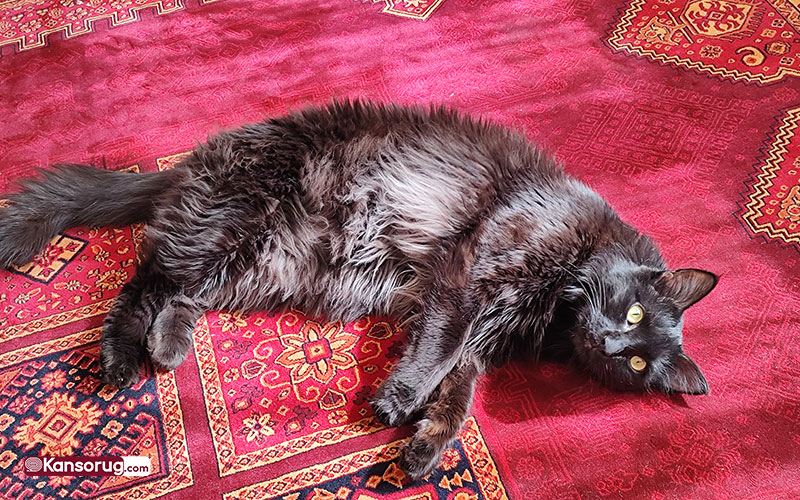
Machine-made carpets are very similar to hand-woven carpets
You might think it's impossible to tell the difference between a handwoven and machine-made carpet but Don't worry! With a little knowledge, you can easily distinguish them. Machine-made vs handmade rugs, how to tell if a Persian rug is handmade? Here are five key methods:
- Inspect the Back: This is the easiest way. Handwoven rugs have inconsistent knots, with slightly irregular rows. The fibers themselves will reveal their nature – wool or silk for handwoven, nylon or polyester for machine-made.
- Feel the Texture: Run your hand over the back of the rug. Machine-made carpets feel uniform and flat, while handwoven rugs have slight variations you can feel. If it's a physical purchase, gently scratch the back with a fingernail. Machine-made carpets produce a stiff, artificial sound, while handwoven ones are softer and more flexible.
- Identify the Fibers: Handwoven carpets use natural fibers like wool or silk, which have a distinct feel and sometimes a faint natural odor. Machine-made carpets, often smelling of chemicals, use synthetics like nylon and polyester. Also, a master trick is to take off a piece of thread or a bit of fiber on the carpet and burn it with a lighter or match. Synthetic fibers burn quickly with black smoke and a chemical smell.
- Examine the Design: Handwoven carpets often boast unique designs. While some machine-made carpets may mimic them, they're typically mass-produced with identical patterns. Look for subtle variations in color scheme, central motifs, or border details. These imperfections are the hallmarks of human artistry.
- Check the Fringes: Traditionally, handwoven carpets have fringes that are seamlessly woven into the rug, creating a soft and flexible texture. However, be aware that some machine-made carpets now mimic this feature.
Bonus Tip: Request many close-up photos of the rug's back, fringes, and knots for a more detailed inspection when buying rugs online.
How to Identify Authentic Persian Rugs: Avoiding Fakes
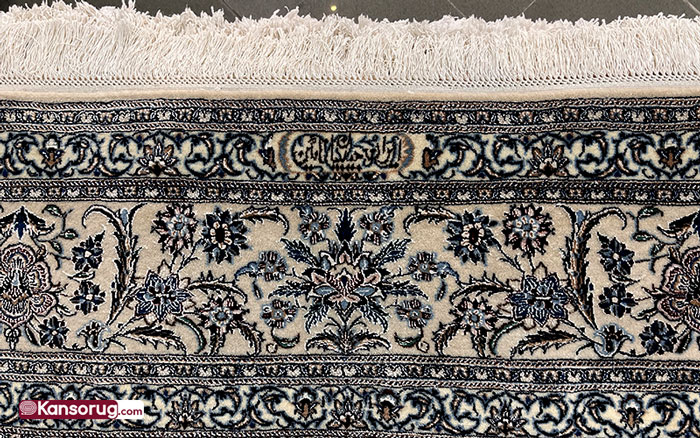
Sometimes you can see the signature of an authentic Persian carpet inside some carpets
When a product becomes popular, the market can become saturated with imitations. If you're seeking genuine, hand-woven carpets, especially beautiful Persian rugs, it's important to be aware of potential fakes from China, Pakistan, Afghanistan, or India. Additionally, some factories have begun creating machine-made rugs that closely resemble hand-woven carpets. Here's how to navigate this market and make a confident purchase:
1. Buy from Reputable Iranian Sellers:
If shopping in person, inquire about the carpet's certificate of authenticity, including its weaving origin in Iran, silk content, quality, and any synthetic materials used. With the rise of online shopping, consider searching Instagram, Facebook shops, or trusted seller websites to find reputable Iranian sellers and order directly. This can offer a more exciting and affordable experience!
Always ask for a guarantee with a return policy. The seller should guarantee the carpet's authenticity, colorfastness, and material quality. Additionally, they should confirm the weaving region and offer a return option in case of discrepancies.
2. Become Your Own Expert:
Learn to check the material and quality of the carpet using the methods described in this article. Seek guidance from knowledgeable sellers like us to make informed decisions. Consider using a reputable buying agent if needed.
3. Examine Appearance, Color, and Dimensions:
Handmade rugs have a more matte finish and natural colors, while fakes often have a glossy sheen and artificial colors. Handwoven carpets typically have slightly irregular dimensions, while machine-made carpets are very precise.
4. Analyze the Fibers:
Handwoven rugs use natural materials like wool, cotton, and silk. Fakes from China or India might use synthetics like polyester and acrylic. Persian handwoven carpets tend to be more delicate and finely woven.
5. Inspect the Back of the Rug:
Handwoven carpets have irregular knots of varying sizes, while machine-made carpets have perfectly uniform knots. The fringes of handwoven rugs are part of the weave and naturally emerge from the carpet. Fakes have fringes sewn on after the weaving, reducing their lifespan. Handwoven carpets also have thicker and sturdier fringes.
6. Look at the Weft or Edges:
Handwoven rugs use cotton wefts woven horizontally into the carpet. Fakes might use synthetic yarns woven vertically.
7. Design and Patterns:
The design quality and creativity are hallmarks of a Persian handwoven rug. Beautiful Persian rugs typically have intricate, well-integrated, and logically cohesive patterns. Other brands might not prioritize this, potentially allowing for inconsistencies in design that wouldn't be found in a Persian rug.
8. Compare Prices:
Many buyers ask why a handmade rug costs significantly more than a Chinese, Indian, or Pakistani alternative. While Farsh Persian offers a unique and lasting brand experience, not all Persian carpets are expensive. Prices range from budget-friendly to luxury. Compare the carpet's quality to its price to identify an authentic piece. If a high-end Qom or Isfahan carpet is offered at a low price with generic patterns, consider it a red flag.
Bottom Line:
In the past, luxury carpets meant hand-woven Persian masterpieces—a symbol of beauty, craftsmanship, and lasting value. But today, the market is flooded with replicas, and many buyers have shifted toward modern, low-maintenance options like flat-woven Swedish rugs, geometric round rugs, and even 17th-century Aubussons that prioritize minimalism over the rich textures, symbolism, and stories woven into authentic handmade rugs. Among these replicas are so-called “Persian-style” rugs—machine-made in China or hand-knotted in Pakistan by low-cost labor, and others woven in India using cheaper materials in an attempt to compete with the unmatched quality of rugs born in Iran. Yet, in a quick comparison, these alternatives fall short, lacking the depth, durability, and cultural soul that define true Persian carpets. That’s why one of the most reliable ways to identify a truly valuable Oriental rug is to ensure its origin: it must be made in Iran.
This shift might stem from a growing disconnect between consumers and the deeper meaning behind traditional carpets. Many people don’t know how to identify a rug or how to tell if an Oriental rug is high-quality. Some rely on tools like a rug identification app, a Persian rug identification app, or even try to find a rug by picture. While these digital tools, like the best rug identification app free, can help you get started, they can't replace the insights gained from real experience and hands-on knowledge.
Hand-woven Persian rugs are more than just decorative—they’re durable, easy to maintain, and often increase in value over time. Whether you're interested in understanding Persian rug designs, exploring a Persian rug patterns guide, or navigating vintage Persian rug identification, knowing what you’re buying makes all the difference.
Identifying truly authentic rugs—those with softness you can feel, warmth you can sense, and stories that whisper from every thread- is always more reliable with the help of experts. The moment that beautiful piece arrives in your hands, you’ll understand its worth, not just as a carpet, but as a legacy meant to be admired, lived with, and passed down for generations.
Experience the thrill of shopping in Iran's vibrant carpet bazaars! Whether you're looking through an Oriental rug identifier app, searching for help with identifying types of Oriental rugs, or simply curious about your options, our team is here for you. As your expert sourcing agent, we provide free consultation and hands-on guidance to make sure you find an authentic piece you'll treasure.
Contact us today, and let’s turn your rug search into a beautiful discovery.
Please rate Stellar
Your page rank:
Related Posts
Practical Solutions from Experts: The Best Rug Identification App
-
Posted by
Bahador Mir
- 0 comments
Which Is the World’s Best Handmade Carpet? History and Facts
-
Posted by
Bahador Mir
- 0 comments
How To Identify A Handwoven Rug?
-
Posted by
Bahador Mir
- 0 comments
How Do I Know What Carpet to Buy? Which Type of Carpet Is Best?
-
Posted by
kansorug_admin
- 0 comments
Hand-woven or Machine-made Carpet? Are Handmade Rugs Better?
-
Posted by
kansorug_admin
- 3 comments
Area Rugs: Adding Comfort, Style, and Functionality to Your Home
-
Posted by
kansorug_admin
- 4 comments
How Handmade Carpets Are Priced and Evaluated?
-
Posted by
mohammadreza saberi
- 0 comments
Why Persian Rugs Are Expensive and Valuable: Unveiling the Artistry
-
Posted by
mohammadreza saberi
- 0 comments

